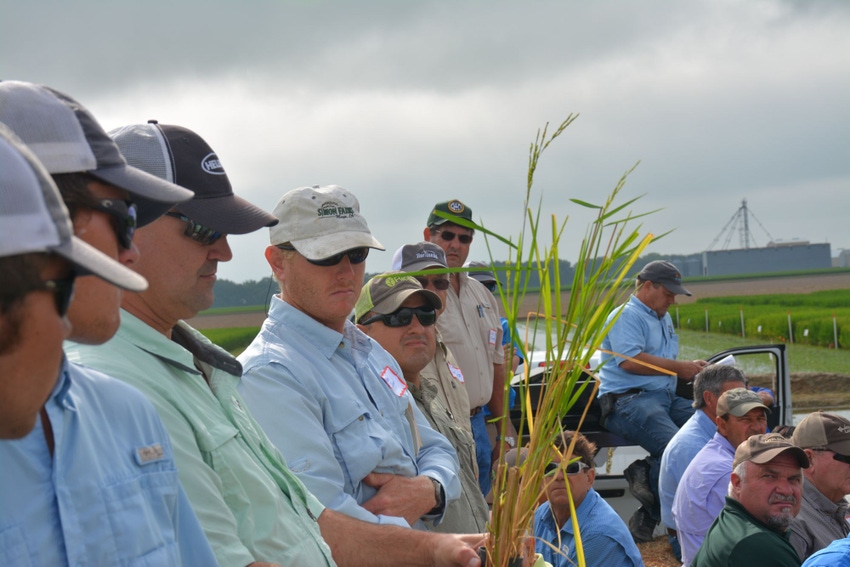
Global exporters face historic challenges
(NOTE: See accompanying charts for look at latest supply and demand fundamentals and technical analysis.)
As “Global Geopolitical Uncertainties” intensify, global exporters, especially rice exporters, find themselves facing a historically, post-World War II, unpredictable global business environment, due to economic, social and political change.
After years of embracing the globalization model, businesses are now, with an eye on survival, accelerating the restructuring process to enhance efficiency and profitability given today’s business realities.
It is difficult to find any market sector not under-going major restructuring, just a sign of the times.
Why do global geopolitical uncertainties continue to evolve?
Poor economic performance – global and domestic – over extended periods of time guarantee to produce social unrest, evolving “Populists Movements” and political change.
Poor domestic and global economic performance, in this case, is a function of: chronic slow growth, low to negative interest rates and building debt, all of which remain domestically and globally problematic.
Leave these forces unchecked, and a global recession will emerge, which would intensify an array of geopolitical concerns:
To lessen the ever-present geopolitical concerns, current governments and central banks globally have an objective to orchestrate an accelerated move away from:
Chronic low inflation to an aggressive simulative reflation economic setting
S. Central Bank’s monetary accommodation to managing economic activity in a rising interest rate environment
Subpar global growth for almost a decade is due, in no small part, to building global debt to sustain expanding social programs in country after country around the world.
Therefore, what we find is that today’s populists movements are accelerating a transition:
All countries are increasingly focused on economic, food, energy and homeland security, especially “food security.”
Rice’s “global food security” importance, as a food grain, used in feeding the world’s global population is second to none. Globally negotiating rice trade agreements have their challenges:
Some countries will not even negotiate rice trade agreements due to food security priorities and concerns and other issues;
Even countries that do negotiate trade deals are not likely to agree to open and free trade, and;
A country may negotiate a fairly open trade agreement, but challenging economic times (like today) may limit their level of compliance and enhance their protectionism.
Countries increasingly embrace
Nationalism
Protectionism
Regionalism over globalism or the economic and foreign policy planning activities on a global basis
Farm and business consolidation will continue, until the most efficient or predatory emerge
In any commercial business sector agricultural or otherwise, notice that the sector is contracting toward the most efficiency or highly structured.
Status quo or business as usual will likely fail.
World rice supply exceeds demand
World rice-Cliff Note version
World rice acreage at 161.5 million hectares is the 2nd highest on record.
World rice yield at 4.4 metric tons per hectare is consistent with previous four periods.
World rice rough production at 717.5 million metric tons is the highest on record.
World rice milled production at 481.1 million metric tons is the highest on record.
World trade at 41 million metric tons is the 3rd highest on record.
World rice total use at 479.2 million metric tons is the highest on record.
World rice ending stocks at 118.1 million metric tons are the highest since 2001.
NASS Prospective Planting Report
S. - Cliff Note version
2017 Arkansas long grain rice planted acres estimated at 1,050,000 acres or 25.5 per cent below 2016; 5-year average 1,150,000; 10-year average 1,202,000; 15-year average 1,250,000 acres.
2017 California long grain rice planted acres estimated at 9,000 acres the same as 2016, 5-year average 7,000, 10-year average 6,800, 15-year average 7,067 acres.
2017 Louisiana long grain rice planted acres estimated at 375,000 acres 9.2 percent below 2016, 5-year average 387,000, 10-year average 405,500, 15-year average 415,467 acres
2017 Mississippi long grain rice planted acres estimated at 375,000 acres, 9.2 percent below 2016, 5-year average 156,000, 10-year average 185,000, 15-year average 197,667 acres.
2017 Missouri long grain rice planted acres estimated at 200,000 acres, 13 percent below 2016, 5-year average 194,400, 10 year average 193,200, 15 year average 197,667 acres
2017 Texas long grain rice planted acres estimated at 155,000 acres 16.2 percent below 2016, 5 year average 150,000, 10 year average 158100, 15 year average 165,000 acres
2017 United States long grain rice planted acres estimated at 1,909,000 acres, 21 percent below 2016, 5-year average 2,044,400, 10-year average 2,150,600, 15-year average 2,229,267 acres.
Long grain rice Cliff Note version:
2016-17 long grain rice production is estimated at 166.5 million cwt, 25 percent above last year, 5-year average 138 million cwt., and 10-year average 147 million cwt.
2016/17 long grain rice total supply is estimated at 209.7 million cwt, 3rd largest on record, 16 percent above last year, 5-year average 182 million and 10-year average 189 million cwt.
2016/17 long grain rice domestic and residual use is estimated at 102 million cwt, 3rd largest on record, 5-year average 91 and 10-year average 94 million cwt.
2016/17 long grain rice total exports is estimated at 78 million cwt., 5-year average 70 million cwt., and 10-year average 72.94 million cwt.
2016/17 long grain rice total use is estimated at 180 million cwt, 2nd largest on record, 5-year average 160 million cwt., and 10-year average 166.94 million cwt.
2016/17 long grain rice ending stocks are estimated at 29.7 million cwt, 3rd largest since 1985, 5-year average 22.3 million cwt., and 10 year average 23.8 million cwt.
Conclusion: U.S. long grain rice producers certainly do not need to plant beyond the March 31, 2017 Prospective Planting Report intentions given fundamentals and no new demand source on the horizon. Overplanting in a world intently focused on regional rice self-sufficiency and an array of food security concerns will likely provide huge market challenges during the 2017 marketing period.
Please view accompanying Rice Slide Show.
Bobby Coats is a professor in the Department of Agricultural Economics and Agribusiness, Division of Agriculture, University of Arkansas System. E-mail: [email protected].
DISCLAIMER-FOR-EDUCATIONAL-PURPOSES
About the Author(s)
You May Also Like




